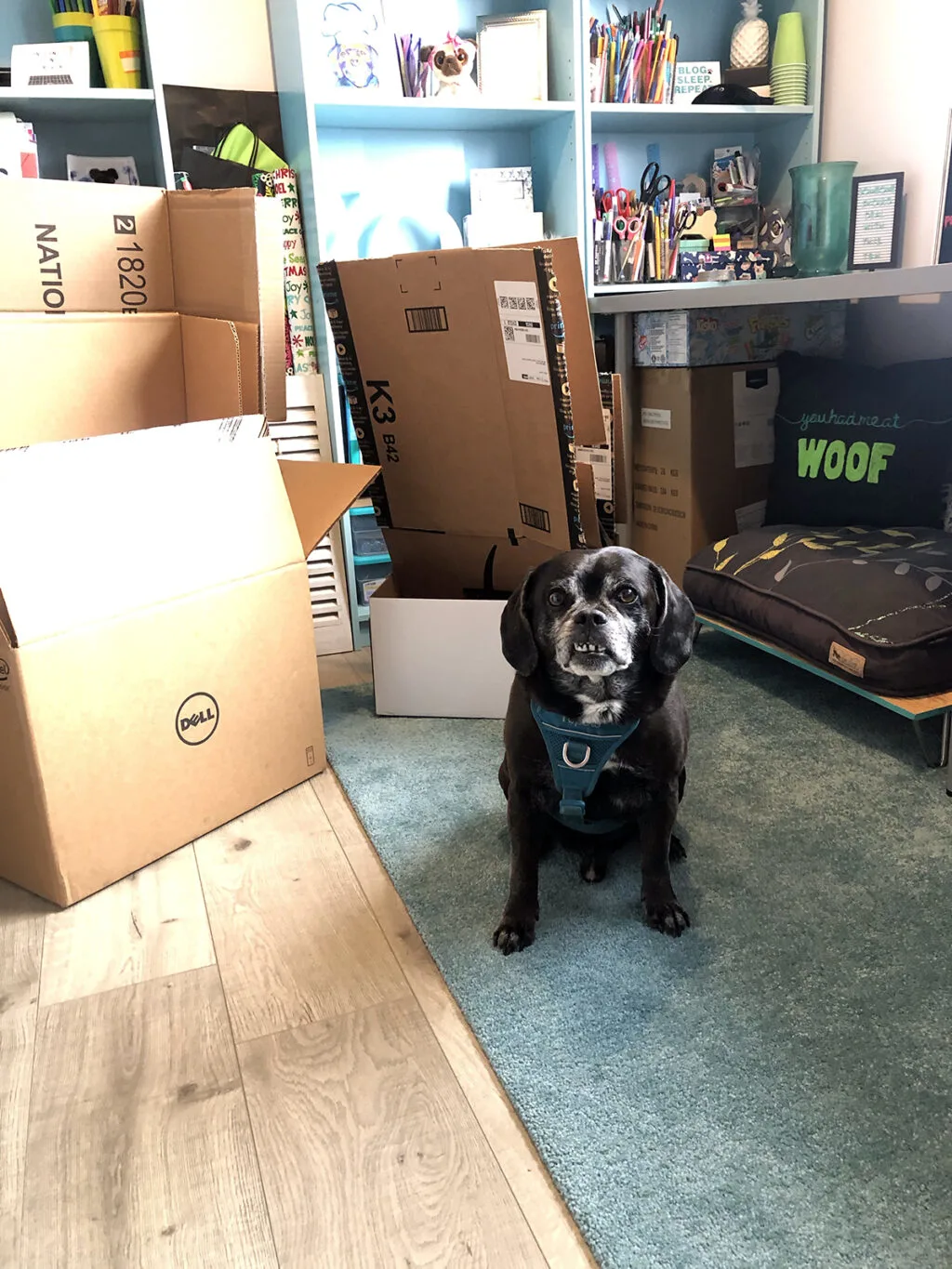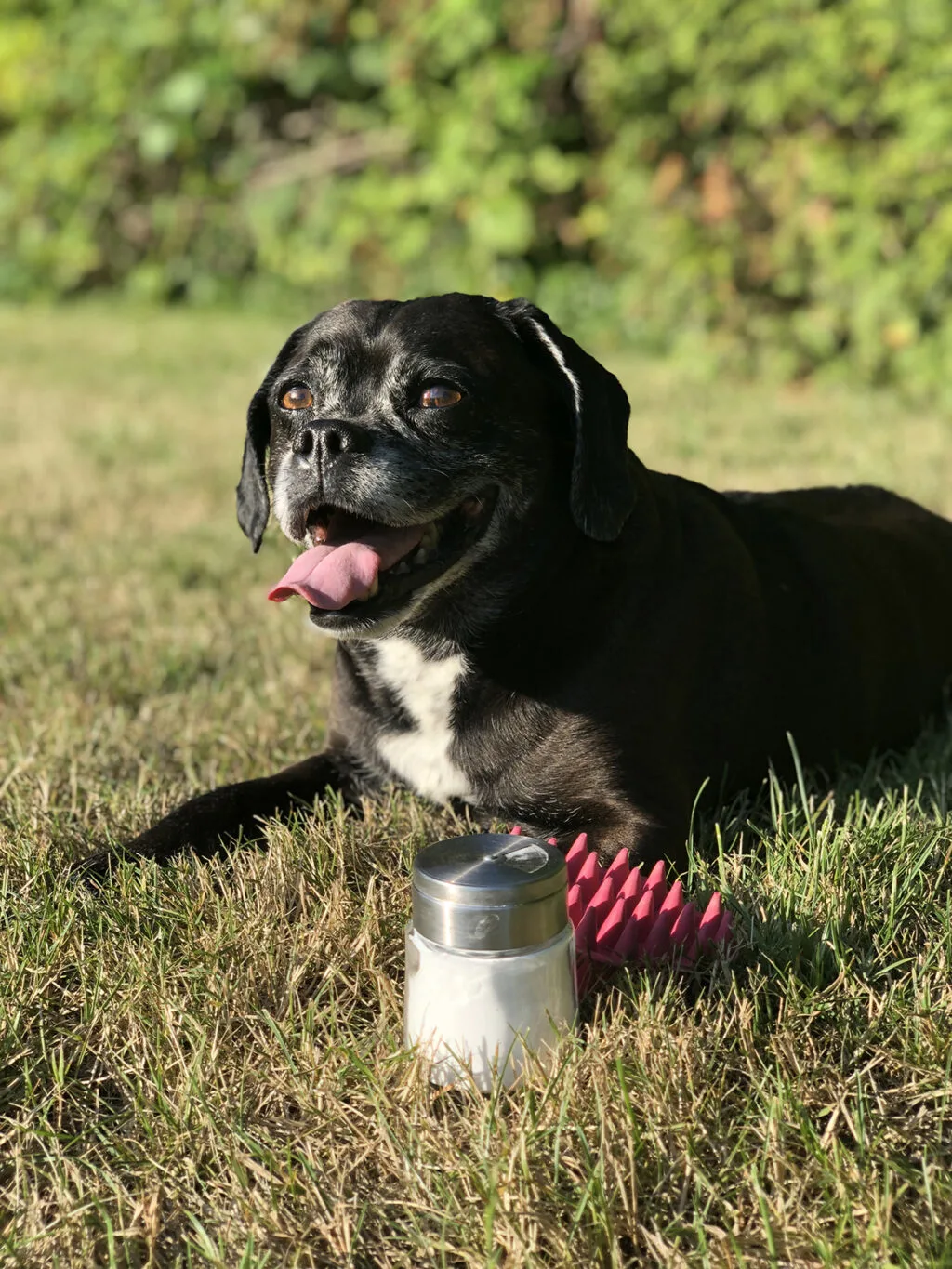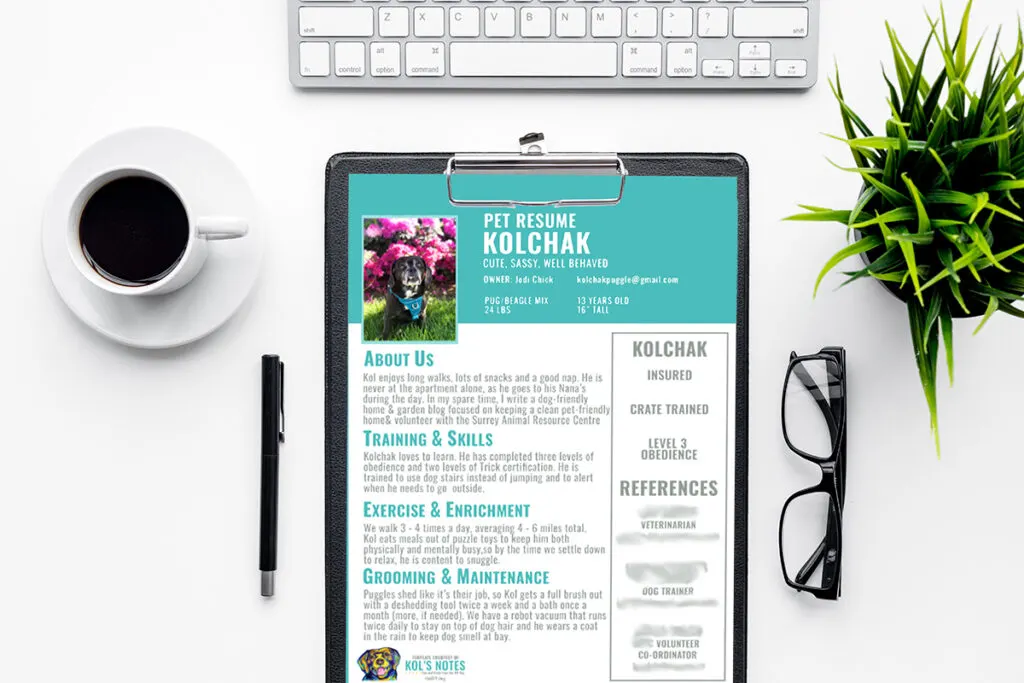As a member of the Etsy affiliate program and an Amazon Associate, I earn from qualifying purchases.
No matter how good of a pet owner you are, renting with pets is HARD.
For the last two years, Kol and I have been living in a spacious, charming apartment that is absolutely perfect for us. I take pride in keeping our space clean, (mostly) free of pet hair, and absolutely free of dog smell. Even though Kol is a big personality, he’s also extremely well behaved, non-destructive, and the ideal apartment dog.
However, when our landlord said they were selling our apartment, I was crestfallen. I knew it was going to be a struggle to find a new pet-friendly rental.

There is a pet-friendly rental crisis.
In 2018, Pets OK BC estimated that among approximately 400,000 rentals in BC, only nine percent of advertised rental units allowed cats, and only three percent allowed dogs. And since then, the rental crisis in BC has only gotten worse.
And I get it. I truly do. Our current apartment is lovely. But it’s lovely because the previous tenant and their pets caused significant damage. The landlord had to do a number of renovations before I moved in. I have moved into apartments left gross by the previous tenant and their animals. We’ve all heard the horror stories. Bad renters give all renters with pets a bad name.
Being sympathetic to owners and the problems they face doesn’t change that there is a shortage of pet-friendly housing.
Statistically, pet owners are great renters.

A 2004 companion animal study showed that pet owners stay in their rentals longer. They typically pay a higher rate in rent. And surprisingly, there was little difference in damages between renters with and without pets. Offering a pet-friendly rental can also dramatically increase the number of applications a landlord receives. More applicants mean more renters to choose from. Pet deposits to cover any pet-specific damages reduce the risk that landlords will lose money.
So, knowing all this, how do you convince potential landlords that you are a pet owner worth renting to? I’ve been extremely lucky in finding rentals that I love, owned by wonderful people who have embraced my pets. I also work hard to make myself a highly desirable renter. This is how I do it.
Tips for finding the perfect rental to share with your pets
Ask previous landlords for a letter of reference
If you are a good tenant, most previous landlords will be happy to write you a letter of reference. Ask them to include a few specific details, such as confirming that the space was clean, there was no damages, and that there were no complaints to strata about barking, etc. I have one of these letters from every single place I’ve lived with pets. Knowing you have a history of good tenancy can help landlords who are hesitant to rent to pet owners feel confident. References from previous neighbours can also be of value; Though they likely won’t hold the same weight as a letter from the property owner or manager themselves.
Show you have an obedient, well-behaved pet by completing some dog training classes or completing training certificates

Well behaved pets can make it much easier to find rentals. Kolchak has completed his level 3 obedience and we just started working on a trick and fitness certificate. Having proof that Kolchak is a good boy really makes it easier to sell us as a good tenant. If you have a breed that is prone to stereotypes or specific behavior issues, share how you have addressed them.
And this advice isn’t just for dog owners! Cats may not do a lot of sports, but they do require training. Consider having a cat trainer come in to do an evaluation. Then ask them to write a letter of recommendation.
Demonstrate that you have a plan for unexpected pet bills.
One landlord I interviewed with had a tenant whose beloved pet fell ill. And while she was entirely sympathetic to that sad situation, she was also put in a very tough spot. That tenant stopped paying rent in order to cover their dog’s medical bills. The experience left her reluctant to rent to pet owners. She hated feeling like the “bad guy” making the tenant choose between housing and their pet’s health. I have extensive pet insurance, so even if Kol fell ill (knock on wood), his expenses would be manageable. However, that’s not the only option. You can show that you’re pre-approved for care credit, that you have your own pet-specific savings account, or any other steps you’ve taken to ensure if something happened, you could afford your pet’s care and your rent.
Responsible pet ownership makes for a better renter.

Landlords want to know that their space won’t be ruined by muddy paw prints, nail scratches, and smells. Great grooming routines and an effective cleaning schedule can help reassure an owner that your space will be well-maintained.
Several of the landlords I spoke to talked about the importance of walking your dogs – even in a rental with a yard. To them, it was something that set good dog dog owners apart from great ones. Taking your dog on frequent walks not only lets them use the bathroom; it also shows that you are not just letting them loose in the yard. Dogs less likely to cause damage to grass or other plants if they’re well-exercised.
Enrichment activities like puzzles and food toys can show that you are committed to ensuring your pet is not a nuisance to neighbors. Bored dogs are more likely to bark, make noise and cause trouble.
Be honest about any struggles or shortfalls your pet may have – and how you are fixing or mitigating them.

I get it. No pet is perfect. Kolchak is not perfect. (Please don’t tell him I said that. It’ll be a whole thing.) There are always things that we need to work on. It is important to be honest about those things, so they don’t come up as an unexpected problem later. This also gives you the chance to show how you are working on it.
If your dog chews things, crate training is a great way to prevent damage when you can’t supervise them.
If they are noise reactive, things like DogTV, Through a Dog’s Ear or audiobooks can help.
Kolchak likes to bark – loudly and insistently – 1 or 2 times as soon as we walk in the door, reminding me that HE IS OWED A SNACK because walks are very tiring and he is wasting away. I keep a jar by the door, have taught him a Hush command and we’re working on him being less of a demanding jerk. (His patience has waned in his senior years – lol).
A pet resume is a simple and clear way to communicate all this information to potential landlords.
I’ve even had success in renting spaces that said “no pets” in the listing after introducing myself and my pets with a resume. It never hurts to ask, right?
A landlord is more likely to make an exception or pull your application to the top of the pile if they feel like they know enough about you and your pets to feel like their property is in great hands (or paws).
Since we’ve had such success with it, we wanted to make it something quick and easy that any of you could do too, so I made this handy PDF template. It outlines each section and what to put there, plus it’s already formatted and pretty.
Here’s Kolchak’s resume:

Are you looking for new pet-friendly housing? Put your best paw forward! Download our free pet resume template.

Do you have any tips to help find the perfect pet-friendly rental?
We’d love to hear them. Pop ’em in the comments below.
Update: After writing this post, I was lucky to find another awesome apartment through a friend. That’s my other tip: tell everyone you’re looking. You never know who knows someone looking for an awesome renter.



Brandon Pennington
Sunday 7th of February 2021
Interesting post. If you have an ESA (emotional support animal) as a pet then a landlord has to rent to you. As long as you have a letter from a professional such as a phycologist, they cannot discriminate according to the Fair Housing Act.
Jodi & Kolchak
Sunday 7th of February 2021
In many areas of Canada, including where I live, ESAs are not exempt from housing restrictions; only guide dogs and certified service animals. They also aren't guaranteed access to public spaces.
Even if they were protected in our area, Kolchak is not an ESA, wouldn't be a suitable one (he soaks up other people's stress like a sponge) and I am very opposed to people buying fake "certifications" for their pets in order to skirt the edges of the law. But it's definitely a great tip for people who do have a legally acceptable ESA to keep in mind!